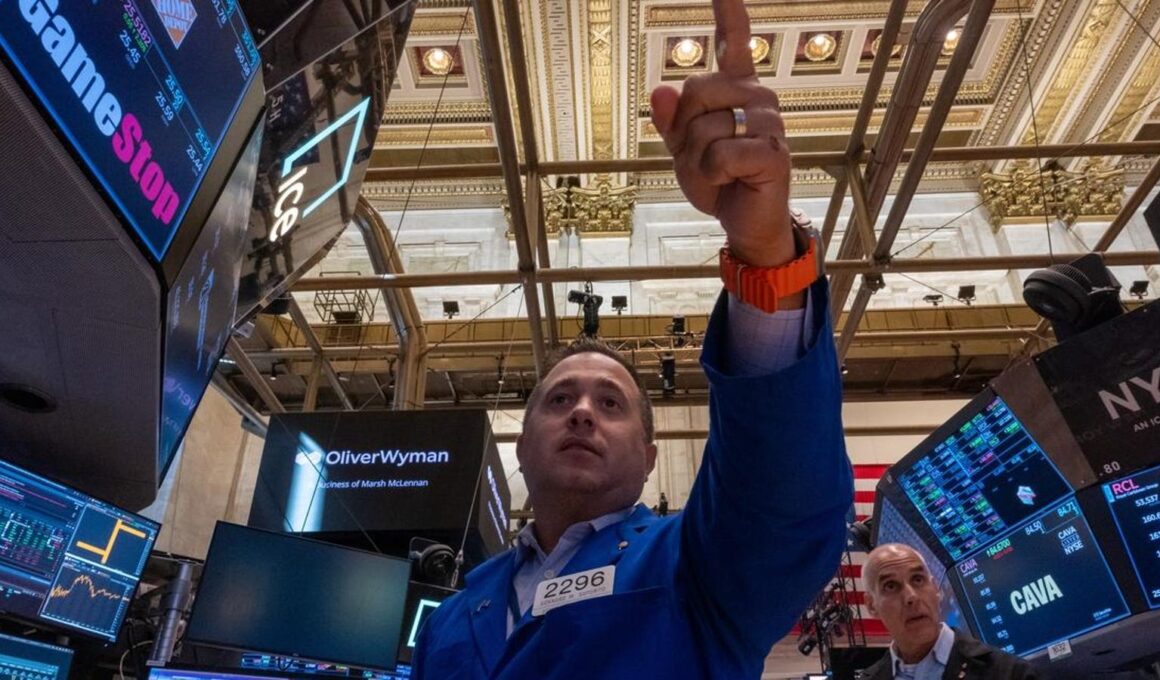Topline
The small company-focused Russell 2000 index once again outperformed indexes skewed more heavily to a handful of massive companies as the stock market’s July makeover continues.
The small-cap Russell 2000 has drubbed the S&P 500 in July.
Key Facts
Leading the mixed results was the Russell 2000, which rose 1.6% on Thursday, erasing its 2% drop Wednesday, which was the worst day for the S&P 500 and tech-heavy Nasdaq Composite indexes since 2022.
The Russell 2000, which tracks 2,000 public U.S.-listed companies with a median market capitalization of below $1 billion, outpaced the big company-skewed S&P and Nasdaq’s 0.5% and 0.9% respective losses and the narrower Dow Jones Industrial Average’s 0.2%, or 80-point, rally, on Thursday.
That widens the gap between the small-cap Russell 2000 and its mega-cap-tilted big brothers this month: The Russell 2000 is up 8.9% in July, trouncing the Dow’s 2% rally, the S&P’s 1% down tick and the Nasdaq’s 3% drop.
Remarkably, the Russell 2000’s 10-percentage-point rout of the S&P would be its best relative monthly performance compared to the more commonly cited S&P since February 2000 and the third-best of the last 40 years, according to Forbes’ analysis of FactSet data.
In a potentially chilling omen, February 2000 was immediately before the bursting of the dot-com bubble, as the S&P fell 50% from its 2000 then all-time high to its 2002 nadir as investors balked from the lofty valuations achieved by stocks amid enthusiasm for technological advances, a situation often alluded to by skeptics of this decade’s rally as the artificial intelligence gold rush evoked memories of the turn of the dawn of the internet age.
Get Forbes Breaking News Text Alerts: We’re launching text message alerts so you’ll always know the biggest stories shaping the day’s headlines. Text “Alerts” to (201) 335-0739 or sign up here.
Key Background
There’s a far less frightening explanation for the Russell 2000’s drubbing of the S&P, tied to basic market principles and policy expectations, rather than the impending doom of a burst bubble. The Russell 2000 is actually still down 2% from its 2021 all-time high, while the S&P is up 13% from its 2021 peak, so it would take quite an extended stretch of small-cap mania for the index to catch up. The Russell 2000 also benefited heavily from bumper inflation data on July 11 which reignited hopes for interest rate cuts beginning in September. Lower rates tend to benefit smaller companies more than larger ones as smaller firms are often more reliant on debt financing to scale operations. The reverse is also true, hence the Russell 2000’s nightmarish performance since the rate hiking cycle began in 2022. The Russell 2000’s aggregate market value of $2.6 trillion as of June 30 is less than the individual market caps of Apple, Microsoft and Nvidia, speaking to just how much bigger the S&P and Nasdaq indexes are than the Russell 2000. The S&P is up 14% since the end of 2021, excluding dividends, dwarfing the Russell 2000’s 2% loss since just before the high interest rate cycle commenced.
Big Number
40%. That’s how much the Russell 2000 will gain by summer’s end, forecasted Tom Lee, lead strategist at boutique research firm FundStrat, on Monday. “Small caps are very sensitive to a Fed cut,” and the unraveling of short positions in those stocks will help boost the index to a new recording, according to Lee.
Chief Critic
“The chase in small caps…is likely unsustainable,” Morgan Stanley Wealth Management’s chief investment officer Lisa Shalett, told the Associated Press. To Shalett’s point, there’s certainly evidence in the fundamentals that the Russell 2000 isn’t about to take off, with blended projected second-quarter annual revenue growth of 0.4%, according to LSEG data as of last Thursday, far worse than the S&P’s 4.5% forecasted expansion.
Further Reading
Trump Media to the Saudi Arabian influence on golf and what real-life billionaires think of ” Succession.” Send tips to dsaul@forbes.com. Follow Saul for analysis on the biggest daily economic and stock market happenings, ranging from inflation data to tech earnings to deep-dives on hot button assets.
“>









